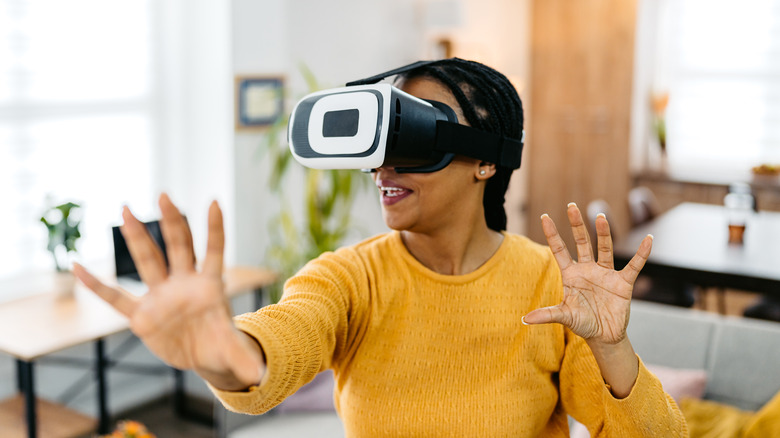
Urbazon/Getty Images
Technologies are always evolving, so it can be easy to forget that many were cutting-edge at their time of release. Some offered top-end power or efficiency, while others simply had especially unique features. Through the last few decades, countless different products ended up breaking new ground and inspiring even more advanced pieces of tech. In fact, some even managed to break records (there are countless engines that have set Guinness World Records, for example).
These products shattered history and are still considerably impressive today. While that might make them sound exceptionally rare, a great number of them also managed to reach the hands of more consumers than anything similar. You might even have at least one piece of record-breaking tech in your home, especially if you’ve been keeping up with trends over the past few decades. Try searching through your home to see if you own any of these high-tech, record-breaking gadgets!
Best-Selling Game Console: PlayStation 2
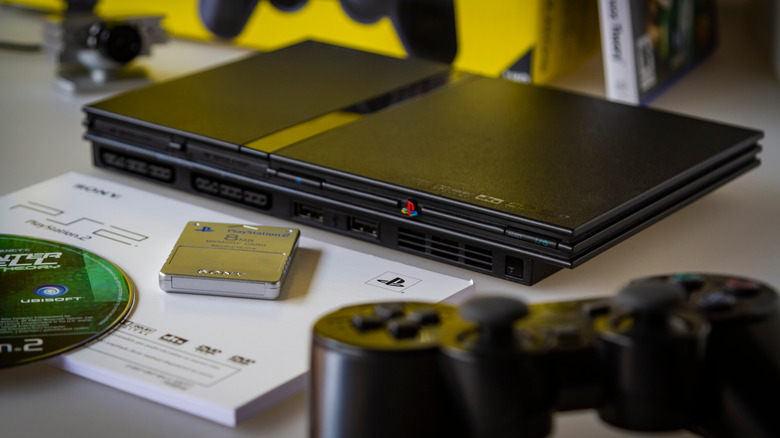
Interneteable/Shutterstock
The PlayStation 2 is far from the most powerful console today, but at its time of release, it remained without competitation for over a year. Sony’s second console was among the first to move past polygonal faces and simplistic environments, with a great number of titles having full 3D models for levels and characters. As it was Sony’s second jump into the console market, it also built on features from its predecessor, including the ability to play PS1 games. Of all the forgotten PS2 features that we might take for granted, this is one that even modern consoles tend to struggle with.
Though it ended production back in 2013, the PS2 still takes home the title of best-selling game console of all time. Standing above both portable and non-portable consoles, it managed to sell over 155 million units, far more than its direct competitors — the original Xbox and GameCube — combined. Whether Sony’s console manages to stay on top has yet to be seen, though, as the recent success of the Nintendo Switch might put extra pressure on its position. But for the past decade, no console has managed to overcome the PS2’s sales.
Fastest-Selling Smartphone: iPhone 6
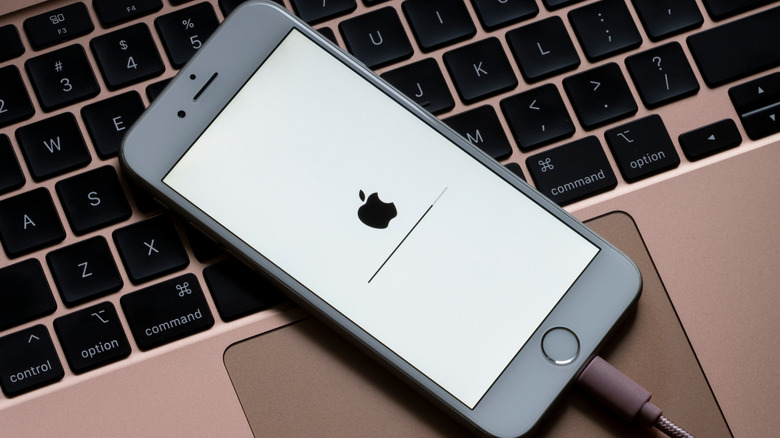
Tada Images/Shutterstock
Apple is among the biggest tech companies out there. As you might expect, that size has allowed it to provide consumers with some of the best tech available, and one of its most notable products is the sixth iteration of the iPhone. The product offers an impressive screen size and a new processor for an extra-responsive operating system, though controversy regarding the iPhone 6 «Bendgate» hurt its overall reception. Although its final sales numbers weren’t high enough to take the title of best-selling phone ever, it did manage to break a similar record.
In just a single weekend after they were released to the world, the combined sales of the iPhone 6 and iPhone 6 Plus managed to reach 10 million. Its later iterations — the 6s and 6s Plus — reached even higher with a combined total of 13 million sales in one weekend. Apple has since stopped disclosing first-weekend sales of future models, so the impressive iPhone 6 numbers might not be as impressive behind the scenes. But from what official numbers have told us so far, it’s the fastest-selling smartphone in the world.
Best-Selling Smartphone: Nokia 1100
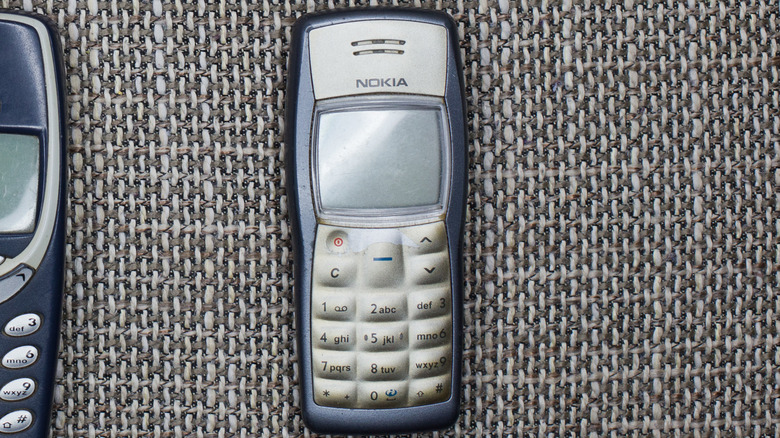
CRM/Shutterstock
It might be difficult to designate the Nokia 1100 as high-tech, even when considering the time of its release. The most impressive thing about it is its absurdly cheap price, set at just $100 when it hit stores in 2003. Most of its other features, such as a flashlight and pre-installed games, were already standard on other phones around the world. In spite of this, the 1100 is still the best-selling phone in the world to date, with over 250 million units sold in total.
The trick to the Nokia 1100’s success is where it was released. Rather than focus entirely on a single market, Nokia went global with its brand and appealed to countries that had less advanced technology available to purchase. In this sense, the Nokia 1100 was high-tech, particularly in places where such technology wasn’t common. By being so affordable and widely-available, it brought millions of people closer to the ever-evolving world of tech. While the recent state of the company might raise questions and concerns about what happened to Nokia, the 1100 will almost certainly keep its legacy alive for years to come.
First Glasses-Based Smart Tech: Google Glass
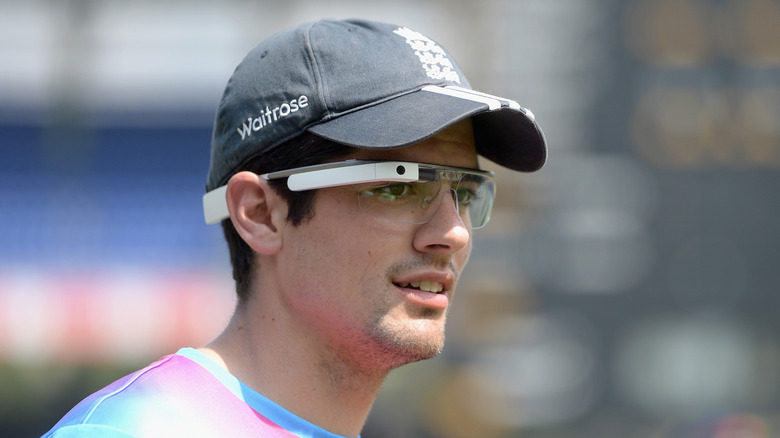
Gareth Copley/Getty Images
As smartphones started to become standard in the early 2010s, large companies looked to incorporate their operating systems into different form factors. One of the most noteworthy examples of this is Google’s Glass product line, revealed in 2013. In simple terms, these were basically computers built into glasses, with GPS directions and internet accessibility mounted on your face. This ended up being the first «smart» tech that was based on glasses, laying the groundwork for multiple products that would follow in its footsteps.
Today, companies like Ray-Ban and Vuzix provide their own smart glasses with even more modernized features. Google is missing from the list of modern-day companies with similar tech, as 2023 was the year enthusiasts finally bore witness to the long, painful death of Google Glass. The company discontinued both its consumer and enterprise lines of smart glasses after 10 years, cutting off any remaining support for them. While this product is unlikely to gain much more attention unless the company decides to revisit it, Google Glass is still noteworthy for expanding the realm of smart technology beyond phones.
First Eye-Tracking VR Headset: FOVE VR
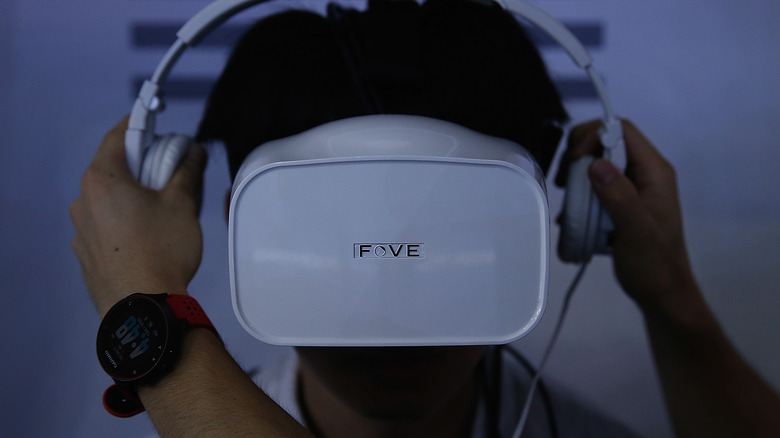
Yuya Shino/Getty Images
VR headsets are among some of the most advanced pieces of tech people can buy even today, with many of them having some form of advanced tracking or immersion-focused capabilities. And back when this technology was still reaching a wider audience, one Tokyo-based startup made efforts to take it a step further. The FOVE headset hit Kickstarter in 2015, giving backers a first look at eye-tracking VR. It was the first headset to provide such a feature, allowing for an even greater level of interactivity within virtual worlds.
Since FOVE’s foray into the VR market, other companies have begun to introduce eye-tracking in their own headsets. VIVE offers a separate upgrade kit to add eye tracking to its Focus 3 headset, while Meta’s Quest Pro headset has eye tracking built in. It’s even available for PlayStation fans thanks to the PS VR2, expanding the technology’s scope beyond professional use. You’re more likely to have these instead of a FOVE headset, partially thanks to its limited availability today, but those who managed to back it on Kickstarter were able to own one of the most advanced pieces of tech during its time.
First Dual-Core Smartphone: LG Optimus 2X
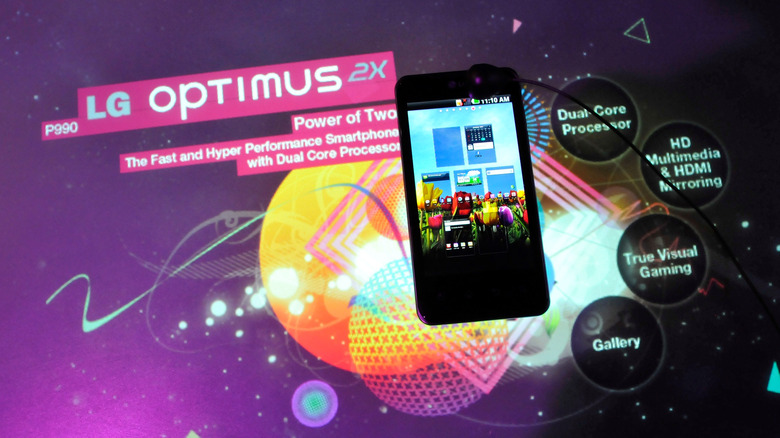
David Becker/Getty Images
LG is a company well-known for its high-tech products and one of the few providers of 8K televisions today. While its hold on the phone industry isn’t nearly as impressive, there were times when it broke ground where no other company had before. Take the release of the LG Optimus 2X in 2011, for example — it was the first smartphone to have a dual-core processor. Smartphones up to this point only managed to reach single-core performance, allowing the Optimus 2X to provide stellar loading times and fantastic framerates in games.
It didn’t take long for competitors to outdo this landmark, with HTC bringing out the world’s first quad-core phone just over a year later. LG’s dual-core offering primarily served as a starting point toward improving the capabilities of phone processors, and now even modern budget phones have multiple CPU cores. While it might not have been ahead of its time, the Optimus 2X still managed to help push the smartphone industry into the future.
First AR Handheld Game Console: Nintendo 3DS
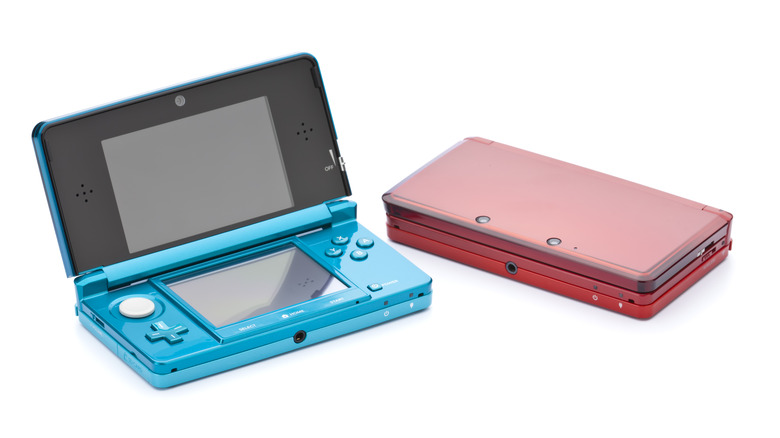
Fcafotodigital/Getty Images
Even before the advent of Google Glass and other technology with augmented reality capabilities, Nintendo was making an effort to introduce the public to more immersive virtual worlds. While the 3DS might be most notable for its glasses-less 3D capabilities, it also managed to make history by being the first AR-capable handheld gaming device in the world. It even included special cards packed in alongside the console to take full advantage of this unique feature. Players could watch an AR Mario appear on their table or fire at targets in a minigame, and the 3DS allowed them to do all that with full 3D visuals.
The 3DS wasn’t the last time Nintendo played with the idea of augmented reality. Pokemon GO was the company’s first foray into the mobile game industry, and it features an AR mode even after nearly a decade of updates. The same company that assisted in Pokemon GO’s release, Niantic, also added AR modes to future releases such as Pikmin Bloom and Monster Hunter Now. It’s hard to say if any future consoles will have built-in AR capabilities, but if that’s something they aim for, the 3DS laid down some excellent groundwork.
Smallest MP3 Player: iPod Shuffle
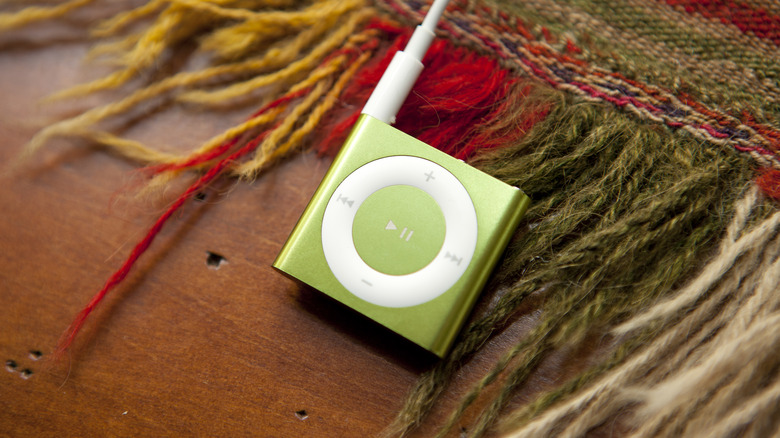
Licreate/Getty Images
It takes just one look to see what record the iPod Shuffle broke. Across four generations with varying shapes and sizes, it’s still the smallest MP3 player to date. It took some very obvious sacrifices to achieve this size, with each generation of the Shuffle lacking any sort of user interface. This didn’t greatly affect its ability to play music, though, so users didn’t miss out on much if playing MP3s was all they really cared about.
Though one could argue over the possibility of smaller MP3 players existing today, you might have great difficulty finding any that can live up to such a claim. Some of these MP3 players have clips attached that increase the size while others don’t even have a case, requiring a great deal of extra work to get them to actually play music. The most competitive products are iPod Shuffle knockoffs that simply copy the original design. Thanks to its basic functionality and thin shape, the Shuffle — especially its fourth generation — is pretty much unrivaled in the world of miniature MP3 players.
First Video Phone Watch: LG GD910
LG beat others to the punch at more than just a dual-core smartphone. Released back in 2009, the LG GD910 was the very first watch able to make video calls. This predates products like the Apple Watch by around six years, as well as Samsung’s Galaxy Gear watch by over four years. Even when ignoring additional features like Bluetooth 2.1 and voice recognition software, its one-of-a-kind form factor made the GD910 one of the most unique and advanced products on the market.
Much like with full-sized phone models, LG has pretty much stepped away from the smartwatch market. At the time, its extremely high price made it difficult to recommend even for the novelty of wearing a phone on your wrist, even if it didn’t have a wide array of competitors for some time. Still, just as the Optimus 2X paved the way for more advanced smartphones, the GD910 helped make high-tech watches as capable as they are today.
[Image by LGEPR via Wikimedia Commons | Cropped and scaled | CC BY 2.0]
First Dual-Screen Mobile Phone: Kyocera Echo
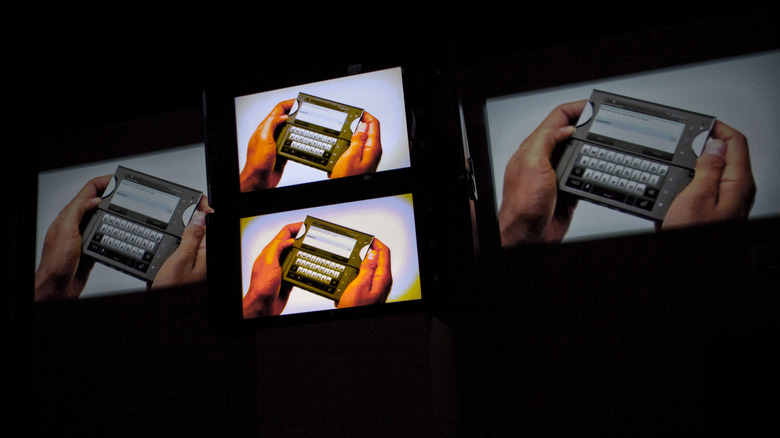
Ramin Talaie/Getty Images
First revealed by Sprint in 2011, the Kyocera Echo gave consumers their very first look at a dual-screen mobile phone. Utilizing a special folding design, the device allowed for touch compatibility on both screens and the usage of two apps at once. Unfortunately, its hardware wasn’t all that impressive, leaving many of its unique features lacking in performance when compared to single-screen products. It could even easily be considered as one of the 10 worst smartphones of all time, but there’s more to its legacy than disappointment.
Today, countless different devices utilize designs similar to the Kyocera Echo to expand screen size through multiple displays and folding capabilities. The Galaxy Fold, Surface Duo 2, and Pixel Fold are just a few modern examples of this technology. Thanks to hardware and software improvements, they’re able to succeed where the Echo failed, offering greater app compatibility and better overall performance. The Kyocera Echo was simply too ahead of its time to succeed, leaving more successful products to build on its influences.